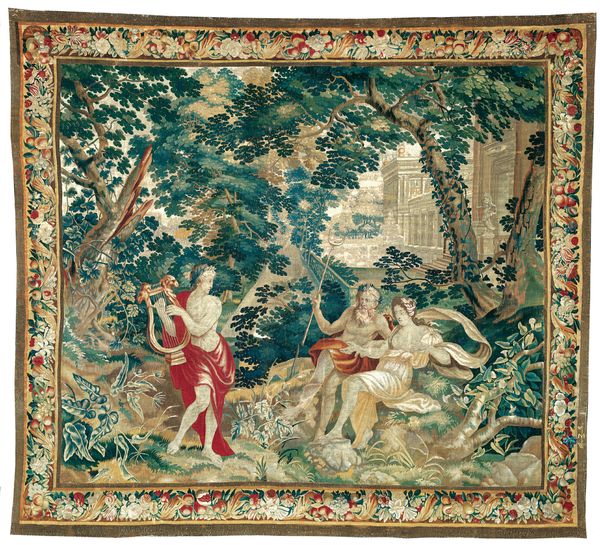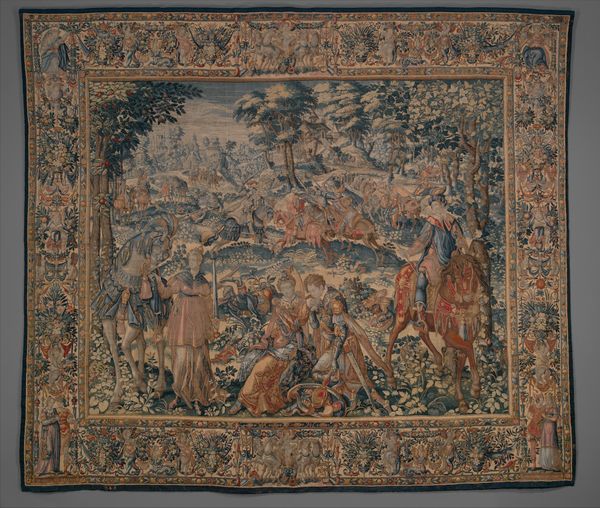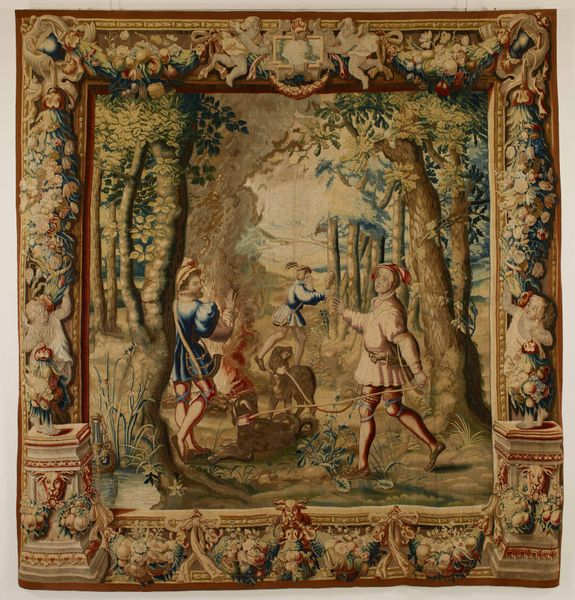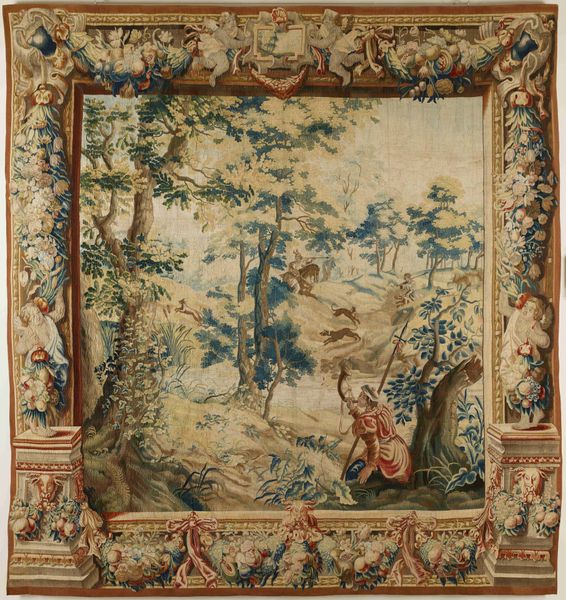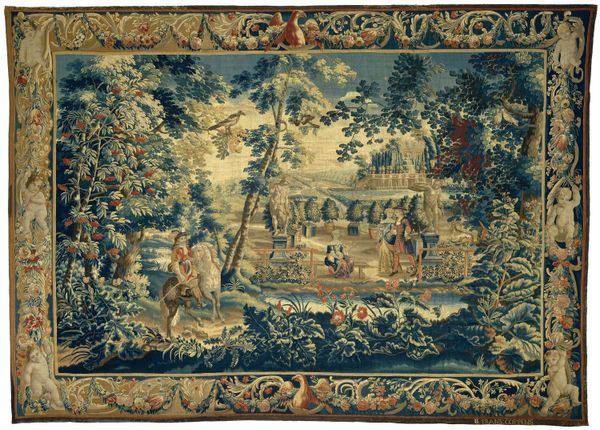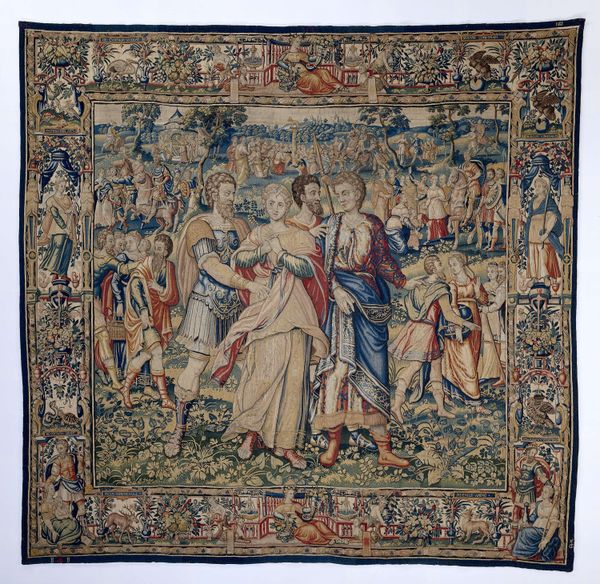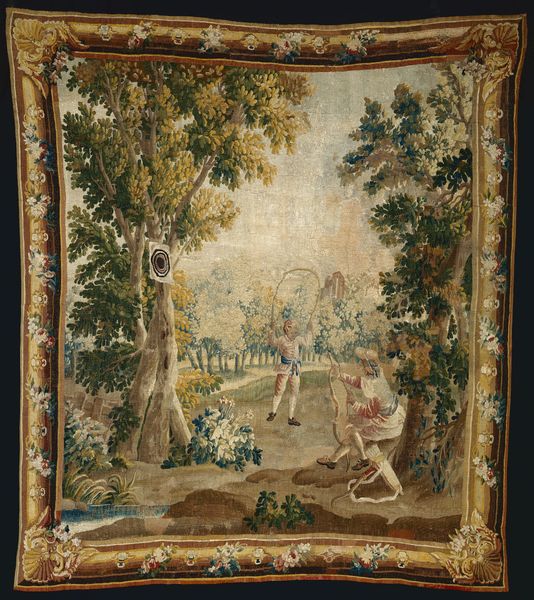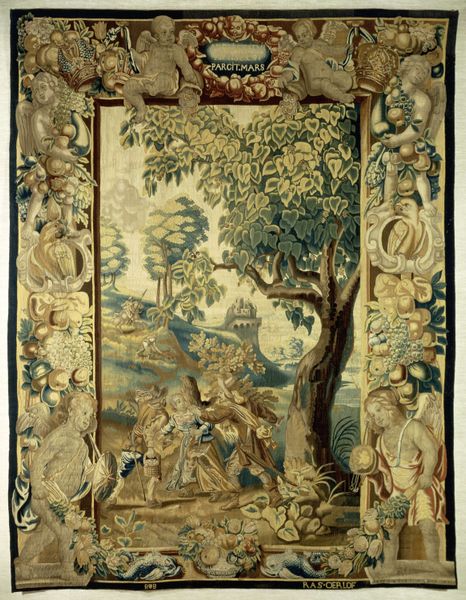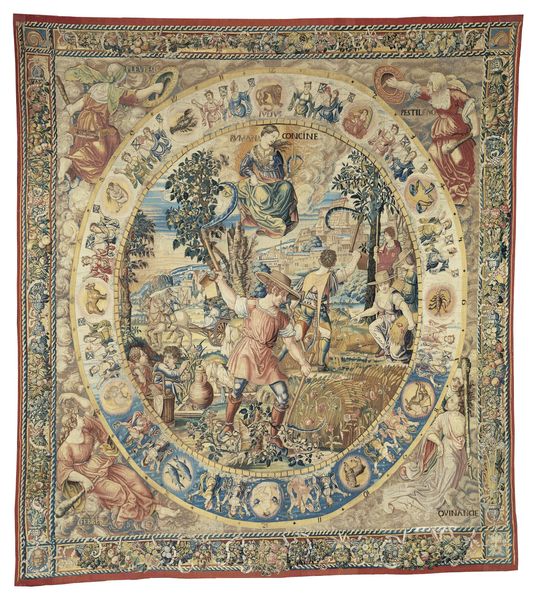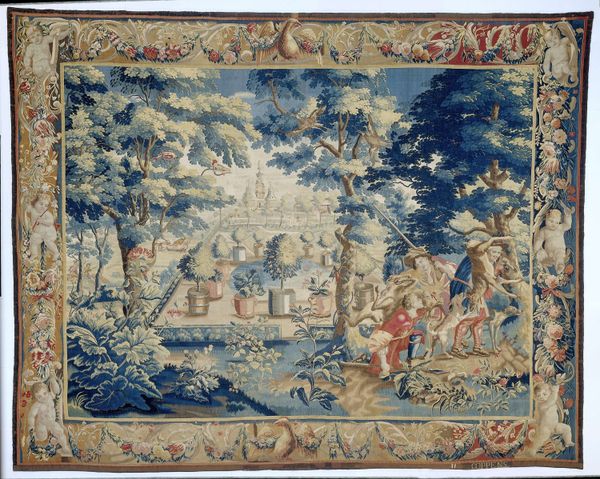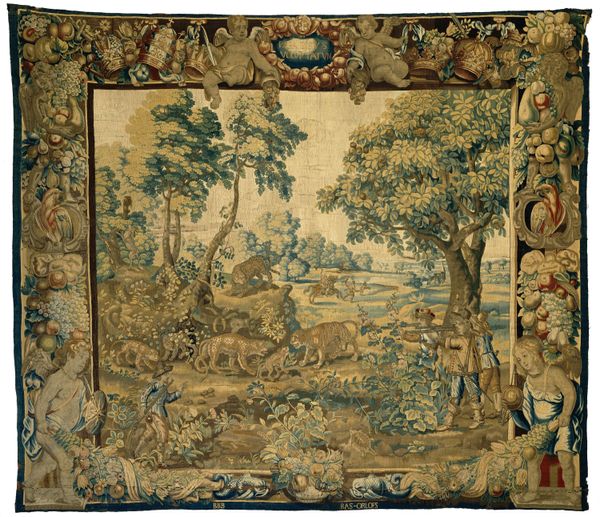
painting
#
painting
#
landscape
#
mannerism
#
figuration
#
history-painting
Dimensions: height 355 cm, height 354 cm, width 330 cm, width 333 cm
Copyright: Rijks Museum: Open Domain
This tapestry, woven by François Spiering, captures the tale of Latona and the Lycian peasants, drawing us into a world rich with symbolic meaning. Observe Latona, the mother of Apollo and Diana, cradling her children, as peasants stir the water with their hands and feet to prevent Latona and her children from drinking. The act of polluting water, a life-giving element, speaks to a primal violation. Water, historically and universally, represents purity, renewal, and the source of life. When sullied, it signifies desecration, ingratitude, and a fundamental disruption of natural order. This symbol transcends time, appearing in various forms across cultures, from ancient myths to contemporary art, often reflecting societal anxieties about purity and corruption. The peasants' transformation into frogs serves as a potent reminder of divine retribution, an age-old motif. The emotional power of this scene lies in its portrayal of hubris punished. It's a cautionary tale etched in our collective memory, engaging us on a subconscious level with themes of justice and morality.
Comments
rijksmuseum about 2 years ago
⋮
Parched with thirst, the goddess Latona and her children Apollo and Diana stopped to drink water from a lake in Lycia. The farmers, however, prevented her from doing this by churning the water up, making it muddy and undrinkable. The angry goddess punished them by turning them into frogs. This curse is foreshadowed here by the frogs that can be seen here and there in the water and on the banks.
Join the conversation
Join millions of artists and users on Artera today and experience the ultimate creative platform.
